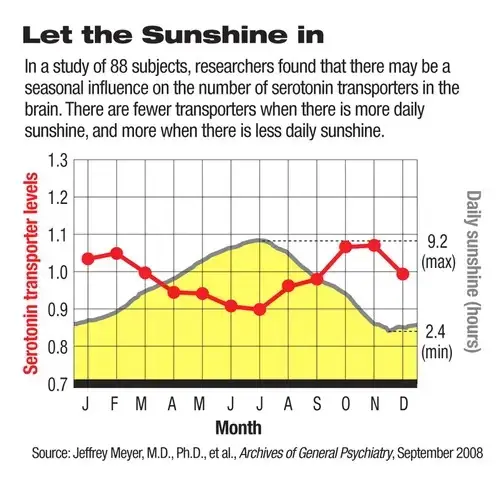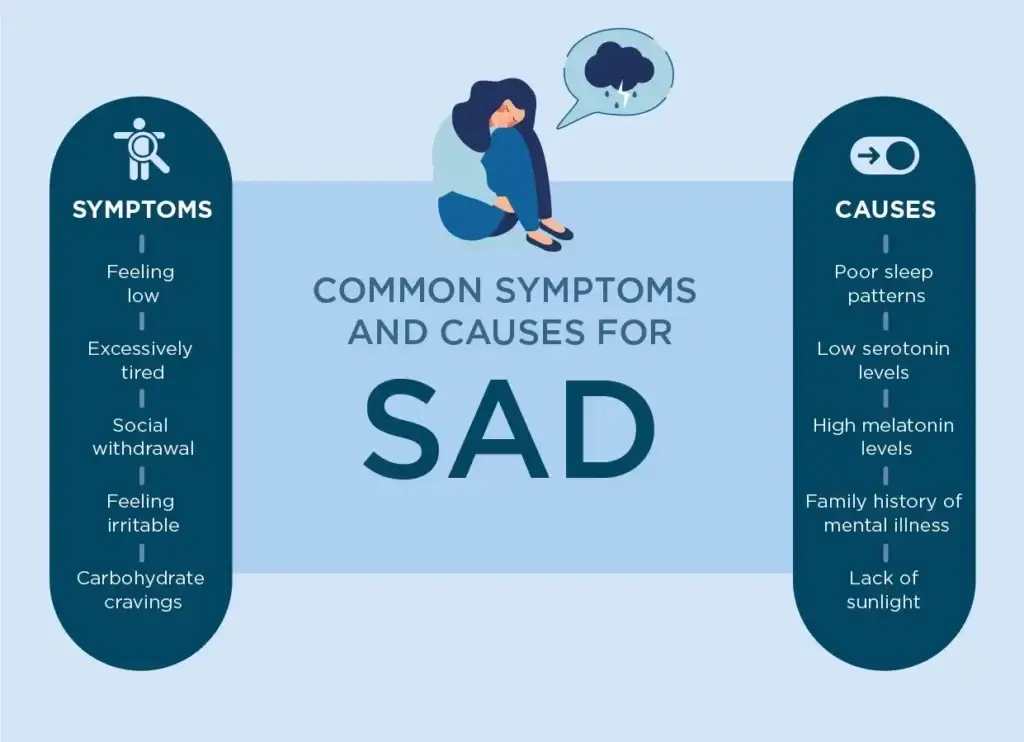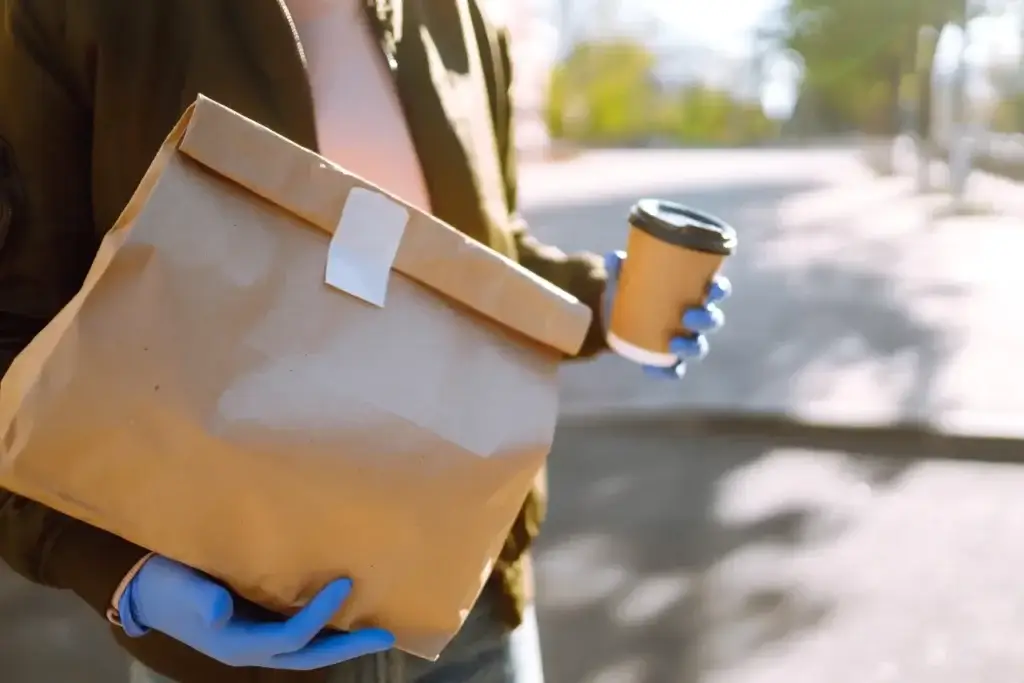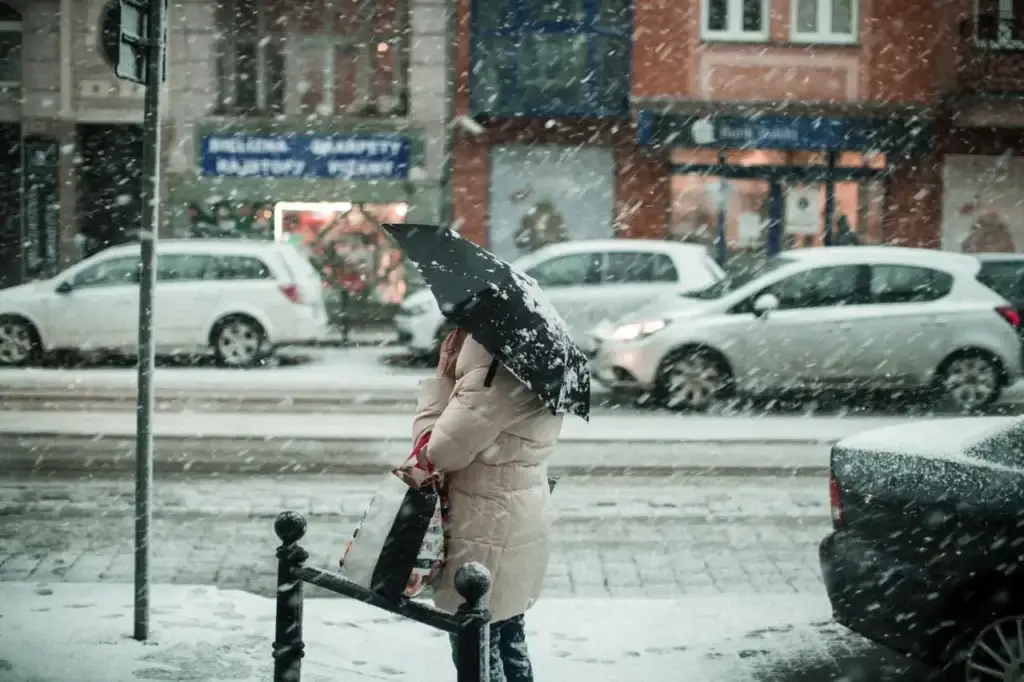I know. This might sound like it’s straight out of a sci-fi movie, but it’s real, and it’s here.
Let’s dive into weather based marketing.
Imagine you’re looking out your window, and it’s raining cats and dogs (yes, I had to look this up, too).
You’re not thinking about buying sunglasses, right?
More like a sturdy umbrella, comfort food, Netflix, and buying some tickets to watch the game.
That’s weather-based marketing in a nutshell.
It’s all about businesses using weather information to promote products that people are likely to buy based on the weather they’re experiencing.
Now, this isn’t just about pushing out ads for hot chocolate when it’s chilly outside.
It’s way smarter than that.
Weather-based marketing uses real-time weather data to create super relevant, timely ads.
Think about it: a sunscreen ad popping up on your phone on a sunny day or a special offer for soup delivery when there’s a chill in the air.
Businesses are catching on that the weather affects:
- What we buy
- How we feel
- and where we go
By tapping into this, they can make sure their ads convert more sales.
In the coming sections, we’ll dive deeper into how this all works and how you can make it rain sales in 2024 with weather-based marketing.
The science behind It — why weather affects buying decisions
Ever wondered why you crave certain things when the weather changes?
There’s solid science behind this, and it’s not just about wanting hot chocolate on a cold day.
Weather deeply influences our moods, behaviours, and even our spending habits.
Let’s break this down.
Studies in psychology and consumer behaviour have shown a clear link between weather and the way people spend their money.
For instance, on sunny days, there’s a natural spike in our serotonin levels, making us feel happier and more adventurous.

The average person spends an average of 11.9% more on a sunny day than a cloudy one.
So you’re more likely to splurge on a day out or buy that pair of trendy shoes when the sun’s out.
On the flip side, gloomy weather can have a different impact.
Studies found that people spend 9.7% less on a rainy day than a sunny one.
And get this, another study found that a 10 km/h increase in wind speed reduced sales by 2.8% on average.
This could be due to something called the Seasonal Affective Disorder (SAD).

It’s a type of depression that comes and goes with the seasons, typically starting in the late fall and early winter.
During these times, companies use what’s known as “sadvertising” – ads that tap into our emotions during the bluesy weather.
Think about ads showing cozy indoor scenes, promoting comfort food, or even travel agencies pushing for sunny holiday destinations to escape the gloom.
Rainy and snowy days are another interesting case.
People tend to stay indoors, which you’d think would mean less spending, right?
Not exactly.
This is when online shopping can see a huge boost in sales.
Like on those days when you’re curled up on the couch, rain tapping against the window, and you’re doom scrolling online stores.
Suddenly, buying that new book or ordering in comfort food seems like a great idea.
Yeah I do it all the time, too.
And it’s not just about the type of products we buy, but also how much we’re willing to pay.
Research has shown that shoppers are likely to spend more on products they perceive as matching the weather conditions.
So, on colder days, there’s often an uptick in sales of warm clothing, hot drinks, and comfort foods.
How local businesses can use weather based marketing
Local businesses might think weather-based marketing is a big player’s game, but that’s not the case.
There’s a lot you can do with just a keen eye on the sky and a dash of creativity.
Let’s explore some practical ways local businesses can use weather patterns to their advantage.
If you own a café and it’s freezing outside, could you introduce a special menu or a ‘warm-up’ discount on soups and hot drinks.
Bit unconventional, but it’ll take people by surprise. And what’s different gets noticed.
Or, if you run a car wash and there’s a forecast for rain, offer a ‘post-rain’ special deal to get that dirt off.
It might seem like a challenge to tie services with weather, but it’s all about thinking outside the box.
For example, a spa or salon could promote rainy day packages or sun recovery skin treatments.
And if the forecast says a heatwave’s coming, local clothing stores can promote their summer collection.
A garden service might advertise lawn care special offers right before the rainy season starts, like ‘beat the rain’ trims.

Remember, it’s not just about reacting to current weather but also anticipating upcoming patterns.
Keep an eye on weather forecasts and plan your strategies and promotions accordingly.
Ecommerce stores can pair seasonal marketing with weather-based marketing
For ecommerce, blending seasonal marketing with weather-based tactics is a smart move.
Think of it as adding a layer to your existing digital marketing strategy.
When you’re setting up for seasonal changes, like preparing for summer or winter, it’s a good time to think about how the weather can play a part in what you’re selling.
Now, it’s important to be selective with products for weather-based marketing.
It’s not going to work for everything.
For example, trying to sell barbecue grills during a blizzard?
Probably not going to fly (unless there’s a tornado…get it?).
But suggesting a cosy fondue set when it’s snowing outside? That could be a hit.
If someone’s living in an area where it’s currently really hot, your website could show them things like cool clothing, fans, or summer sports gear.

If it’s cold, switch it up to display warm clothes, heaters, or indoor games.
If the weather suddenly changes, be quick to show off products that make sense for that new weather.
Weather based marketing examples
Delving deeper, let’s explore how businesses can use weather-based marketing.
Car dealerships
Car dealerships can highlight vehicles with features ideal for upcoming weather conditions, like all-wheel drive for snowy seasons and heated seats or sunroofs for sunny periods.
Offering maintenance services like pre-winter check-ups or air conditioning tune-ups for summer aligns well with customer needs as the seasons change.
Travel Agencies
Travel agencies can create packages for people looking to escape their local weather.
For instance, offering sunny beach vacations during the local cold season or cool mountain retreats during hot weather.
Promoting last-minute deals based on sudden weather changes, like a sunny weekend getaway deal announced right when a forecasted rainy weekend turns sunny.
Restaurants and cafés
Restaurants and cafés can adapt their menus to the weather, offering warming dishes on cold days or refreshing options during heatwaves.
On days with extreme weather, like heavy rain or snow, offering special delivery deals can cater to customers who prefer to stay indoors.

Fitness centres and gyms
Gyms can offer weather-dependent class schedules, like outdoor yoga sessions on sunny days or indoor circuit training when it’s raining.
Developing training programs tailored to seasonal sports or activities, like a winter ski-prep fitness program or summer beach body workouts.
Each of these ideas requires a blend of understanding your customer’s needs and creatively aligning your offerings with the weather.
Can you imagine how to weather the market?
Remember, it’s not about reacting to weather changes but to anticipate them.
It doesn’t matter if you run a cosy coffee shop, a bustling bookstore, or a high-energy gym, there’s a way to make the weather work for you.
Start small, think about how the weather influences buying decisions in your specific industry, and get creative with your strategies.
Weather-based marketing isn’t just a strategy; it’s about building a connection with your customers, showing them that you understand and cater to their needs, rain or shine.

